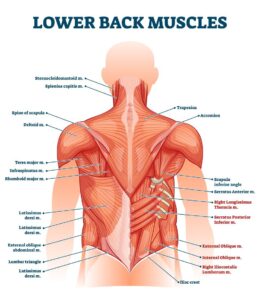Curious about what muscles a row machine targets? This article breaks down the primary muscle groups worked during a rowing workout.
Rowing machines are a popular piece of gym equipment that offers a full-body workout. Some studies suggest they work out over 85% of all muscles in the body.
But what specific muscles do they target? In this article, we’ll explore the primary muscle groups that are worked during a rowing workout, including the back, arms, legs, and core.
[Suggested: Looking for affordable rowing machines?]
Back Muscles

Latissimus Dorsi (Lats): The lats are the largest muscle in the back and are located on either side of the spine. During the drive phase of the row, the lats contract to pull the arms towards the body, which is necessary for generating power and momentum.
Rhomboids: The rhomboids are a group of muscles located between the shoulder blades. During the drive phase of the row, the rhomboids contract to retract the shoulder blades, which helps to maintain proper posture and prevent rounding of the shoulders.
Trapezius (Traps): The traps are a large muscle that runs from the base of the skull to the middle of the back. During the rowing motion, the traps are used to stabilize the shoulders and maintain proper posture throughout the entire motion.
Erector Spinae: The erector spinae muscles are located along the spine and are responsible for extending the back. During the recovery phase of the row, the erector spinae muscles contract to maintain proper posture and prevent rounding of the spine.
Leg Muscles

While the back muscles are the primary focus of a rowing workout, the leg muscles also play an important role.
The quadriceps, hamstrings, and glutes are all engaged during the rowing motion, particularly during the drive phase when you push off with your legs. Strengthening these muscles can improve overall lower body strength and power, as well as increase calorie burn during the workout.
Quadriceps: Located in the front of the thigh, the quadriceps are a group of four muscles (rectus femoris, vastus lateralis, vastus intermedius, and vastus medialis) that are responsible for knee extension, or straightening the leg.
Hamstrings: Located in the back of the thigh, the hamstrings are a group of three muscles (biceps femoris, semitendinosus, and semimembranosus) that are responsible for knee flexion, or bending the leg.
Glutes: Located in the buttocks, the glutes are made up of three muscles (gluteus maximus, gluteus medius, and gluteus minimus) that are responsible for hip extension, or straightening the hips.
Arms and Shoulder Muscles

While the back and legs are the primary muscle groups worked during a rowing workout, the arm and shoulder muscles also play a role.
The biceps and triceps are engaged during the pulling motion, while the shoulders are used to stabilize the upper body and assist in the pulling motion. Strengthening these muscles can improve overall upper body strength and tone.
Biceps: Located in the front of the upper arm, the biceps brachii is a two-headed muscle that is responsible for elbow flexion, or bending the arm.
Forearms: The forearms consist of multiple muscles that control wrist and finger movement, including the flexor carpi radialis, flexor carpi ulnaris, and extensor carpi radialis.
Deltoids: A group of muscles that are located on the outer part of the shoulder and are responsible for shoulder abduction, or lifting the arms away from the body. During the finish phase of the rowing motion, the deltoids are used to bring the handle towards the body, which requires shoulder abduction.
The rotator cuff: A group of four muscles (supraspinatus, infraspinatus, teres minor, and subscapularis) that are responsible for stabilizing the shoulder joint. During the rowing motion, the rotator cuff muscles work to keep the shoulder joint stable as the arms move through the rowing motion, preventing injury and allowing for smooth movement.
Core Muscles
In addition to the back, legs, arms, and shoulders, the core muscles are also engaged during a rowing workout. The abdominal muscles, including the rectus abdominis and obliques, are used to stabilize the body and maintain proper posture throughout the rowing motion.
Abdominals: Located in the front of the abdomen, the abdominals are a group of muscles that are responsible for flexing the spine and compressing the abdomen. The rectus abdominis is the most well-known muscle of this group and is responsible for creating the “six-pack” appearance.
Lower back: Located along the spine, the erector spinae is a group of muscles that are responsible for extending the spine and maintaining proper posture.
Heart and Lungs

In addition to targeting multiple muscle groups, rowing is also a great cardiovascular workout. The repetitive motion of rowing can increase heart rate and improve overall cardiovascular health.
Regular rowing workouts can also help to lower blood pressure, reduce the risk of heart disease, and improve lung function. Incorporating rowing into your fitness routine can provide a well-rounded workout for both muscle strength and cardiovascular health.
Conclusion
Rowing, if done properly, can provide a full-body workout. By understanding what specific muscles are worked, you’ll be able to get a much more effective workout.

